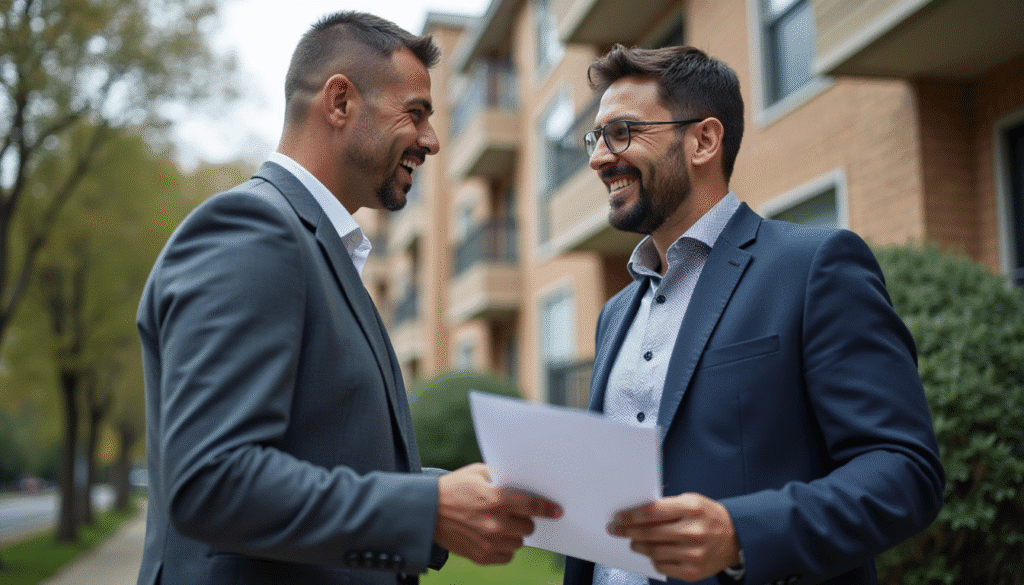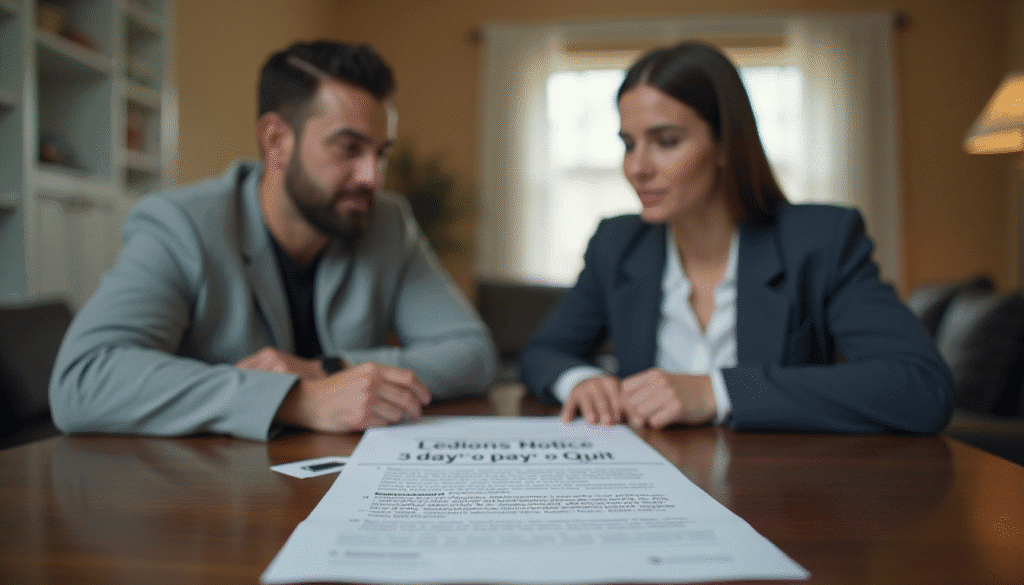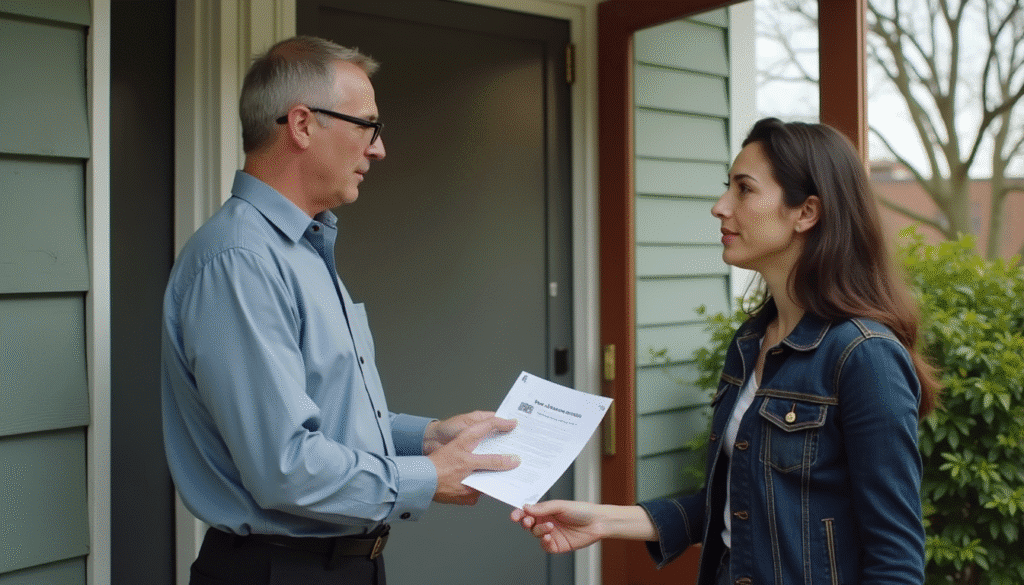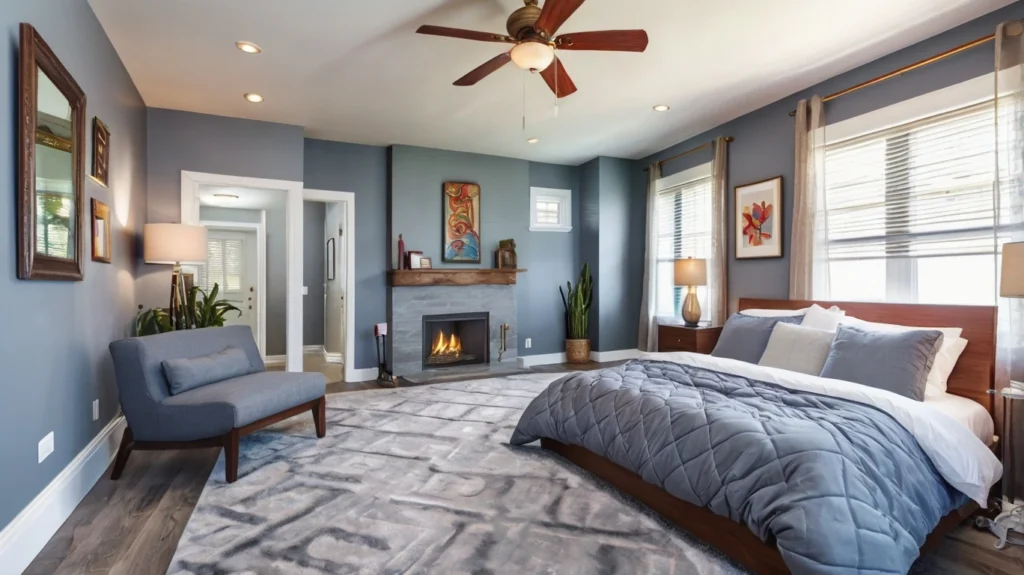Table of Contents
- Introduction
- Importance of Rental Property Maintenance
- Overview of the Guide
- Understanding Rental Property Maintenance
- What is Rental Property Maintenance?
- Why is it Crucial for Landlords?
- Preparing Your Property for Rent
- Pre-Rental Inspections
- Essential Repairs Before Tenants Move In
- Common Maintenance Issues and Solutions
- Plumbing Problems
- Electrical Issues
- HVAC Maintenance
- Pest Control
- Regular Maintenance Schedule
- Monthly Maintenance Tasks
- Quarterly Maintenance Tasks
- Annual Maintenance Tasks
- Emergency Maintenance
- Emergency Repair Protocols
- Communicating with Tenants During Emergencies
- Seasonal Maintenance
- Spring Maintenance
- Summer Maintenance
- Fall Maintenance
- Winter Maintenance
- Legal Obligations and Tenant Rights
- Understanding Landlord Responsibilities
- Tenant Rights and Expectations
- Documentation and Record Keeping
- Importance of Maintenance Records
- How to Keep Track of Maintenance Activities
- Cost-Effective Maintenance Tips
- DIY Maintenance Tips
- When to Hire Professionals
- Conclusion
- The Benefits of Proactive Maintenance
- Final Thoughts
- FAQs
- Frequently Asked Questions About Rental Property Maintenance
- Additional Resources
- Useful Links and Further Reading
Learn how to rent property efficiently with our comprehensive guide. Discover rental process steps, pricing strategies, and marketing strategies for rentals to maximize your returns.
Introduction to Rent Property
Rent property can be a lucrative investment, but it requires careful planning and execution. Here’s a step-by-step guide to help you navigate the rental process successfully.
Understanding the Rental Process
“Real estate is an imperishable asset, ever increasing in value. It is the most solid, the safest, the most profitable investment you can make.”[1]
Before you dive into renting your property, it’s crucial to understand the various steps involved in the rental process.
Rental Process Steps
- Advertising Rentals: Utilize online listings platforms, social media, and local classifieds to advertise your property. Effective marketing strategies for rentals include high-quality photos, detailed descriptions, and competitive pricing[5].
- Showing Properties Tips: Make your property appealing by ensuring it is clean, well-maintained, and staged attractively. Provide potential tenants with a positive first impression to increase the chances of securing a lease[5].
- Tenant Screening Process: Implement a thorough tenant screening process using rental application forms and background checks. This helps in selecting reliable tenants and minimizing the risk of tenant turnover[1][3].
Pricing Strategies
- Market Research: Conduct market research to determine the optimal rental price for your property. Compare your property with similar rentals in the area to ensure competitive pricing[5].
- Local Rental Laws: Familiarize yourself with local rental laws and regulations. This includes understanding rent control policies, security deposit requirements, and eviction procedures[3].
Preparing Your Property for Rent
Lease Agreements Templates
A well-drafted lease agreement is essential for protecting both you and your tenant. Use lease agreements templates that include clauses on rent, lease duration, maintenance responsibilities, and penalties for non-compliance[1][3].
Essential Repairs and Maintenance
Before renting out your property, ensure that it is in good condition. Here are some key areas to focus on:
- Mechanical Systems: Keep heating, cooling, electrical, and plumbing systems in good operating conditions. Regular maintenance helps prevent unexpected breakdowns and ensures a comfortable living environment for your tenants[1][4].
- Structural Maintenance: Maintain structural items such as the roof, attic, sidewalks, and driveway. Regular inspections can help identify potential issues before they become major problems[1][5].
Understanding Rental Property Maintenance
Rental property maintenance is a critical aspect of being a landlord. It not only helps in preserving the value of your property but also ensures tenant satisfaction and compliance with local regulations.
Types of Inspections
Conducting regular inspections is vital for identifying and addressing maintenance issues promptly.
- Move-in Inspection: Perform a walk-through with the tenant to document the existing condition of the property. This helps in avoiding disputes when the tenant moves out[1][3].
- Routine Inspection: Conduct quarterly inspections to check for any maintenance issues. This includes inspecting the property inside and out to identify potential problems early[1][3].
- Drive-by Inspection: Periodically drive by the property to spot any unauthorized activities or signs of property damage[1].
- Move-out Inspection: Conduct a walk-through when the tenant vacates the premises to assess any damages beyond normal wear and tear[1].
Common Maintenance Issues and Solutions
Plumbing Problems
Plumbing issues are among the most common maintenance problems you might encounter. Here are some solutions:
- Leaks and Clogs: Regularly check for leaks under sinks, around toilets, and near water heaters. Addressing these issues promptly can prevent significant water damage and mold growth[4][5].
- Winterization: In cold climates, winterize pipes by insulating them and ensuring that faucets drip slightly to prevent freezing. This helps in avoiding costly repairs due to burst pipes[1][2].
Electrical Issues
Electrical problems can be hazardous and need immediate attention.
- Lighting and Appliances: Ensure that all lighting fixtures and appliances are in good working condition. Replace any faulty items to prevent electrical hazards[4].
- Surge Protection: Install surge protectors to protect electrical appliances from power surges, which can cause damage or fires[4].
HVAC Maintenance
Heating, Ventilation, and Air Conditioning (HVAC) systems require regular maintenance to function efficiently.
- Filter Replacement: Change HVAC filters regularly to ensure optimal performance and energy efficiency. Schedule annual or bi-annual servicing with an HVAC technician to keep the system in good condition[4][5].
- Thermostat Checks: Inspect heating and cooling thermostats to ensure they are working correctly. This helps in maintaining a comfortable living environment for your tenants[5].
Pest Control
Pest infestations can be a significant issue if not addressed promptly.
- Seasonal Pest Control: Perform seasonal pest control measures to prevent ants, spiders, and other pests from invading the property. Regular inspections can help identify pest issues early[1][2].
- Immediate Action: Handle any vermin or pest infestations immediately. This may involve hiring a pest control service to ensure the property is pest-free[1].
By addressing these common maintenance issues proactively, you can prevent more significant problems from arising, ensuring a safe and comfortable living environment for your tenants.
This is just the beginning of your comprehensive guide to renting your property. Stay tuned for more detailed sections on routine maintenance, seasonal maintenance, and emergency maintenance to ensure your property remains in top condition.
Regular Maintenance Schedule
Maintaining a regular maintenance schedule is crucial for keeping your rental property in good condition and preventing major issues from arising. Here’s a detailed breakdown of the tasks you should include in your maintenance schedule.
Weekly Maintenance
Weekly maintenance tasks are essential for managing the immediate interior and exterior areas of the property.
- Trash Management: Ensure that trash is removed regularly, and recycling bins are emptied as needed. This helps maintain a clean environment and prevents pest infestations[3].
- Common Area Cleaning: Clean common areas such as entryways, hallways, laundry rooms, and stairwells. This includes dusting, vacuuming, and disinfecting high-touch areas[3].
- Lawn and Garden Maintenance: Depending on the season, tasks may include raking leaves, mowing the lawn, removing fallen branches, or shoveling snow. Regular lawn care helps maintain curb appeal and prevents structural damage from overgrown plants[4].
- Lighting and Security: Inspect common area lighting and replace burnt-out bulbs. Ensure that window and door locks are functional and repair any broken glass or torn screens[3].
Monthly Maintenance
Monthly tasks focus on deeper cleaning and inspections to ensure the property remains in good condition.
- Appliance Maintenance: Check and maintain appliances such as refrigerators, ovens, and dishwashers. Ensure they are in good working order and address any issues promptly[3].
- HVAC Filters: Change HVAC filters to ensure optimal performance and energy efficiency. This is particularly important during peak seasons when the HVAC system is used extensively[4].
- Plumbing Checks: Inspect for any leaks under sinks, around toilets, and near water heaters. Addressing these issues promptly can prevent significant water damage and mold growth[1][4].
- Pest Control: Check bait and traps used for pest control, replenish bait, and remove dead rodents or bugs. This helps prevent pest infestations and maintains a healthy living environment for tenants[3].
Quarterly Maintenance
Quarterly maintenance tasks are more comprehensive and help in identifying and addressing potential issues before they become major problems.
- Routine Inspections: Conduct routine inspections by walking the property inside and out. This helps in identifying any maintenance issues early and preventing larger problems[1][2].
- Screen and Storm Window Maintenance: Check screens and storm windows; repair or replace them as needed. Swap storm windows and doors for screens, or vice versa, depending on the season[3].
- Heating and Cooling Thermostats: Inspect heating and cooling thermostats to ensure they are working correctly. This helps in maintaining a comfortable living environment for tenants and preventing HVAC system breakdowns[3].
- Exterior Faucets and Gutters: Inspect for frozen exterior faucets, ice dams, and repair as needed. Clean gutters and ensure outdoor lighting is functional[3].
Annual Maintenance
Annual maintenance tasks are significant and often involve more extensive inspections and repairs.
- Roof and Foundation Checks: Inspect the roof for cracks or damage that could lead to water seepage. Check the foundation for any signs of damage or structural issues. Addressing these issues promptly can prevent costly repairs[1][4].
- HVAC Servicing: Schedule annual or bi-annual servicing with an HVAC technician to keep the system in good condition. This includes cleaning the HVAC system, inspecting for any leaks, and ensuring all components are functioning correctly[1][4].
- Smoke, Carbon Monoxide, and Radon Detectors: Ensure smoke, carbon monoxide, and radon detectors are installed and functioning correctly. Replace batteries annually or according to the manufacturer’s instructions[1].
- Interior and Exterior Painting: Consider repainting the interior and exterior of the property annually or as needed. This helps maintain the property’s appearance and protects the walls from wear and tear[4].
Seasonal Maintenance
Seasonal maintenance is crucial for adapting to the changing weather conditions and ensuring the property remains in good condition throughout the year.
Spring Maintenance
Spring maintenance focuses on preparing the property for the warmer months.
- Clear Rain Gutters: Clear rain gutters and areas around the foundation of any winter-related debris. This helps prevent water damage to the roof and foundation[1].
- Landscaping Improvements: Consider making landscaping improvements such as planting flowers and shrubs or reseeding the front lawn. This enhances the property’s curb appeal and increases tenant retention[1].
- Power Washing: Power-wash exterior surfaces and repair any chips or cracks that can lead to water seepage or dry rot[1].
- HVAC Inspection: Conduct a semi-annual inspection of your HVAC before summertime arrives. Ensure the system is clean, and all components are functioning correctly[1].
Summer Maintenance
Summer maintenance focuses on ensuring the property remains cool and safe during the hot months.
- Outdoor Amenities: Ensure that outdoor amenities such as pools, BBQ areas, and playgrounds are clean and in top operating condition. This enhances the living experience for tenants and maintains property value[1].
- Gates and Locks: Check that gates and locks are in good working condition and rust-free. Ensure that landscape watering systems are functioning correctly and optimized for water usage[1].
- Seasonal Pest Control: Perform seasonal pest control measures to prevent ants, spiders, bees, wasps, and other pests from invading the property. This helps maintain a pest-free living environment for tenants[1].
Fall Maintenance
Fall maintenance prepares the property for the colder months ahead.
- Leaf Cleanup: Clear leaves from the yard and gutters to prevent clogging and water damage. This also helps maintain the property’s appearance and prevents structural damage from overgrown plants[1][3].
- Insulate Pipes: Insulate pipes to prevent them from freezing during sub-zero temperatures. Have tenants keep a faucet slowly dripping at all times to maintain water flow and prevent pipes from bursting[1].
- Roof Inspection: Inspect the roof for any cracks or damage that could expand and lead to serious water damage due to repeated freeze and thaw cycles. Repair any cracks or damaged areas promptly[1].
Winter Maintenance
Winter maintenance is critical for ensuring the property remains safe and warm during the cold months.
- Winterize the Property: Winterize the property by insulating pipes, sealing any drafts, and ensuring that the HVAC system is functioning correctly. This helps in maintaining a comfortable living environment for tenants and preventing costly repairs[1][3].
- Snow Removal: Ensure that walkways, driveways, and parking areas are clear of snow and ice. This helps in preventing slips and falls and maintaining access to the property[4].
- Emergency Kit: Prepare an emergency kit that includes essentials such as flashlights, batteries, and a first aid kit. This helps tenants in case of power outages or other emergencies[4].
Emergency Maintenance
Emergency maintenance involves addressing urgent issues that require immediate attention to prevent further damage or ensure tenant safety.
Emergency Repair Protocols
- Clear Communication: Establish clear communication channels with tenants regarding emergency maintenance procedures. Ensure that tenants know who to contact and how to submit emergency repair requests[5].
- 24/7 Access: Have a system in place for handling emergency repairs, including 24/7 access for maintenance personnel. This ensures that urgent issues are addressed promptly, even outside regular working hours[5].
- Emergency Contacts: Provide tenants with emergency contact numbers and ensure they understand the procedure for emergency maintenance requests. This could include a dedicated phone number or an app for submitting requests[5].
Communicating with Tenants During Emergencies
- Prompt Notification: Notify tenants promptly when emergency maintenance is required. This includes informing them of the nature of the issue, the expected timeline for repairs, and any necessary precautions they should take[2][5].
- Regular Updates: Keep tenants updated on the status of emergency repairs. This helps in maintaining transparency and ensuring that tenants are informed throughout the process[2][5].
- Minimizing Disruption: Minimize disruption to tenants during emergency repairs by coordinating with them to find the most convenient time for the repairs. This helps in maintaining a positive landlord-tenant relationship[2][5].
Legal Obligations and Tenant Rights
Understanding legal obligations and tenant rights is crucial for maintaining a compliant and respectful landlord-tenant relationship.
Landlord Responsibilities
- Health and Safety Codes: Ensure that the property meets all health and safety codes mandated by local and state laws. This includes providing smoke detectors, carbon monoxide detectors, and ensuring that the property is free from hazards[2][5].
- Maintenance and Repairs: Maintain the property by performing routine and emergency repairs. Ensure that all mechanical systems, structural components, and common areas are in good condition[1][2].
- Compliance with Local Regulations: Familiarize yourself with local rental laws and regulations. This includes understanding rent control policies, security deposit requirements, and eviction procedures[2][3].
Tenant Rights
- Safe Living Environment: Tenants have the right to a safe and habitable living environment. Ensure that the property is well-maintained, and any issues are addressed promptly[2][5].
- Privacy and Access: Respect tenants’ privacy and ensure that any access to the property for repairs or inspections is done with their knowledge and consent. Provide adequate notice before entering the property[2][5].
- Reporting Issues: Encourage tenants to report any maintenance issues promptly. This helps in addressing problems early and preventing larger, more costly repairs[1][5].
Documentation and Record Keeping
Maintaining detailed records of all maintenance activities is essential for accountability, legal protection, and future reference.
Importance of Maintenance Records
- Accountability: Detailed records help in tracking maintenance activities and ensuring that all tasks are completed as scheduled. This promotes accountability and helps in identifying any gaps in maintenance[2][3].
- Legal Protection: Maintenance records can serve as evidence in case of tenant disputes or legal claims. They provide a clear history of the property’s condition and any repairs or maintenance performed[2][3].
- Future Reference: Maintenance records are useful for future reference, especially when selling the property or when new tenants move in. They provide a comprehensive history of the property’s maintenance and any issues that have been addressed[2][3].
How to Keep Track of Maintenance Activities
- Digital Tools: Use digital tools or apps to create reminders for maintenance tasks and track completion. This helps in staying organized and ensures that nothing important is overlooked[2][4].
- Checklists and Calendars: Create a maintenance calendar and checklists to outline tasks by frequency (weekly, monthly, quarterly, seasonal, annual). This helps in planning and organizing maintenance activities efficiently[2][3].
- Documentation of Repairs: Document each repair, including dates, costs, and any contractor involvement. This creates a clear history of the property’s condition and any maintenance activities performed[2][3].
Cost-Effective Maintenance Tips
Maintaining a rental property can be costly, but there are several cost-effective tips that can help in reducing expenses.
DIY Maintenance Tips
- Basic Repairs: Handle basic repairs such as changing light bulbs, unclogging drains, and replacing air filters yourself. This can save money on contractor fees[4].
- Preventive Maintenance: Perform preventive maintenance tasks such as cleaning gutters, inspecting for leaks, and pruning trees to prevent larger issues from arising. This helps in reducing the need for costly repairs[1][4].
When to Hire Professionals
- Complex Repairs: For complex repairs such as electrical or HVAC issues, it is advisable to hire professionals. While it may seem costly upfront, hiring experts can prevent further damage and ensure the job is done correctly[4].
- Time-Saving: Hiring professionals can also save time, allowing you to focus on other aspects of property management. This is particularly beneficial if you have multiple properties to manage[4].
Budgeting for Maintenance
- 1% Rule: Follow the 1% Rule, where you set aside 1% of the property’s value each year for maintenance. For instance, if a rental property is worth $300,000, you should budget approximately $3,000 annually for upkeep[4].
- Emergency Fund: Maintain an emergency fund to cover unexpected maintenance costs. This ensures that you are prepared for any urgent repairs that may arise without disrupting your cash flow[4].
Conclusion
Renting your property requires a comprehensive approach to maintenance to ensure that the property remains in good condition, tenants are satisfied, and your investment is protected. By following the steps outlined in this guide, you can create a proactive maintenance plan that addresses routine, preventive, seasonal, and emergency maintenance needs.
The Benefits of Proactive Maintenance
- Tenant Satisfaction: Proactive maintenance helps in maintaining a safe and comfortable living environment for tenants, leading to higher tenant satisfaction and retention rates[1][2].
- Cost Savings: Addressing maintenance issues promptly can prevent larger, more costly repairs down the road. This helps in saving money and reducing the financial burden of unexpected repairs[1][4].
- Property Value: Regular maintenance helps in preserving the value of the property. This ensures that the property remains in good condition and maintains its market value over time[1][4].
By staying organized, communicating effectively with tenants, and adhering to local regulations, you can ensure a successful rental experience for both you and your tenants.
FAQs
What is the importance of regular inspections in rental property maintenance?
Regular inspections are crucial for identifying and addressing maintenance issues early. They help in preventing larger problems, ensuring tenant satisfaction, and maintaining the property’s condition[1][2].
How often should I perform routine maintenance on my rental property?
Routine maintenance should be performed regularly, with tasks broken down into weekly, monthly, quarterly, and annual activities. This ensures that the property remains in good condition and prevents major issues from arising[1][3].
What are some common maintenance issues that landlords face?
Common maintenance issues include plumbing problems, electrical issues, HVAC system breakdowns, pest infestations, and structural damage. Addressing these issues promptly
References
[1] The Investor’s Guide to Rental Property Maintenance [2] The Complete Rental Property Maintenance Checklist for 2022 [3] Rental Property Maintenance: A Landlord’s Checklist [4] 10 Rental Repair and Maintenance Responsibilities for Landlords [5] The Essential Rental Property Maintenance Checklist for Landlords






